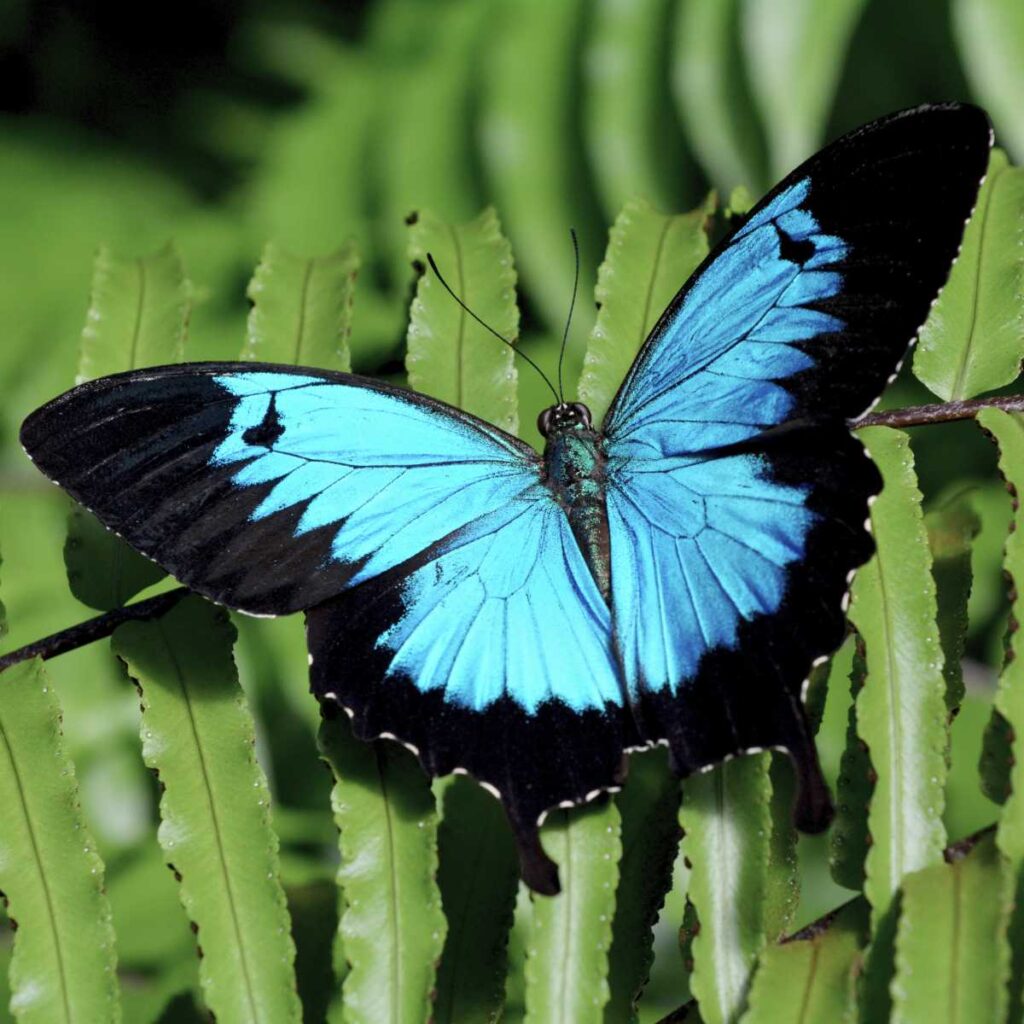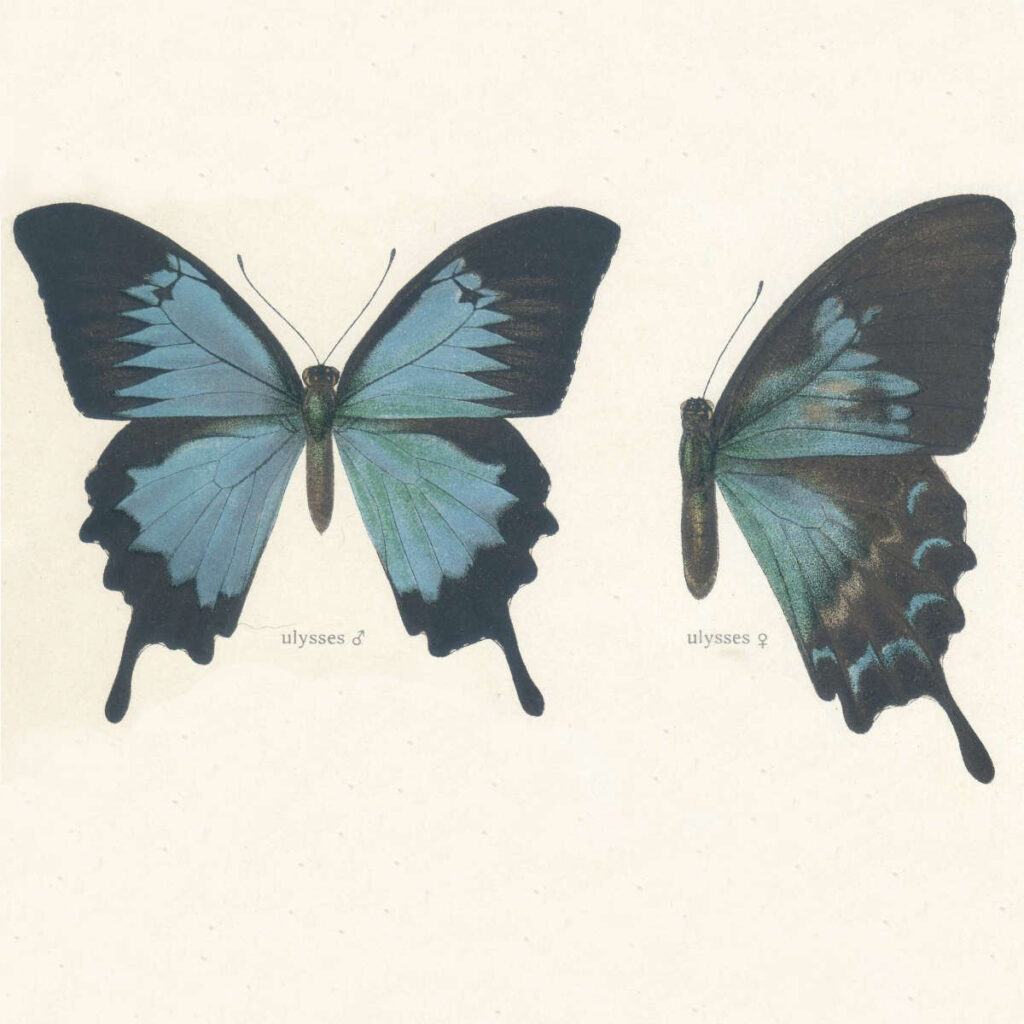Last Reviewed and Updated on January 20, 2023
Butterflies are fascinating creatures, and the Ulysses butterfly is no exception. These majestic creatures are some of the world’s most beautiful and fascinating butterflies. Read on and learn some of the most interesting facts about the Ulysses butterfly.

About the Ulysses Butterfly
The Ulysses butterfly, also known as the Ulysses swallowtail, is a species of butterfly found in Australia, Papua New Guinea, and the Solomon Islands.
A Ulysses butterfly undergoes a complete metamorphosis, meaning it goes through four stages during its lifecycle: an egg, larva (caterpillar), pupa (chrysalis), and adult. It takes several weeks for the caterpillar to form a chrysalis and metamorphose into an adult butterfly.
Larvae feed on kerosene wood. A caterpillar of the Ulysses butterfly feeds on the leaves of plants, while an adult butterfly feeds on nectar.
Ulysses butterflies have a wingspan of approximately 4-5 inches / 10-12 cm.
Facts About the Ulysses Butterfly
From its glorious name to its obsession with the color blue, this butterfly has some interesting facts to share.
1. Ulysses butterflies are named after a Greek hero
The Ulysses butterfly, otherwise known as the Ulysses swallowtail, takes its name from the character Ulysses, or Odysseus, from Greek mythology. He is one of the most famous figures in Greek literature and is the protagonist of Homer’s epic poem, the Odyssey.
2. Australian state of Queensland uses this butterfly as an emblem for tourism
While the state’s official emblems are the Cooktown orchid and koala, the Ulysses butterfly is unofficially used as the emblem for tourism. You will often see it pictured in tourist brochures and tourist offices.
3. The male of the species is different from the female
The differences between the female and male are subtle from afar, but if you get the chance to observe these butterflies from close, they are easily recognizable. If you observe their bottom wings, you will notice the females have little blue moon-like (crescent) shapes on their wings, while that of the male are entirely black.
There are also slight variations in the hue of their blue color and the amount of it covering the wings.

4. Males are strongly attracted to the blue color
Male Ulysses butterflies are strongly attracted to blue color, often flying towards blue objects in hopes that they spotted a female.
5. When flying, they can be spotted from very far
It’s easy to spot one, even from afar, thanks to its vibrant blue color. As they open and close their wings, blue flickers can be seen in the air even if they are 330 feet / 100 meters away.
6. They are quick and erratic flyers
There is one major downside to their wonderful and easy-to-spot color. Predators quickly spot them as well. To countermeasure that, Ulysses butterflies fly quickly and in a very erratic pattern; the faster and more erratic they are, the better their chances of avoiding any potential predator.
This also makes these butterflies very hard to photograph when they are flying.
7. The caterpillars are well camouflaged
While adult butterflies lack camouflage when flying (they are camouflaged when resting with wings closed), the caterpillars have excellent camouflage. They are green with white spots, so they blend in very well with the plants they feed on.
Green and white isto ko rastlina s kteroj se hraniji
8. Adult Ulysses butterflies live for up to 4 weeks
When these insects reach the adult butterfly stage of their life cycle, they only live for about 2 to 3 weeks, with some lucky ones getting about a week more.
9. They don’t have a specific mating season
They mate all year round, with some seasons having higher populations than others. But you can generally spot one all year round.
Love butterflies? Read through these surprising facts about butterflies.
